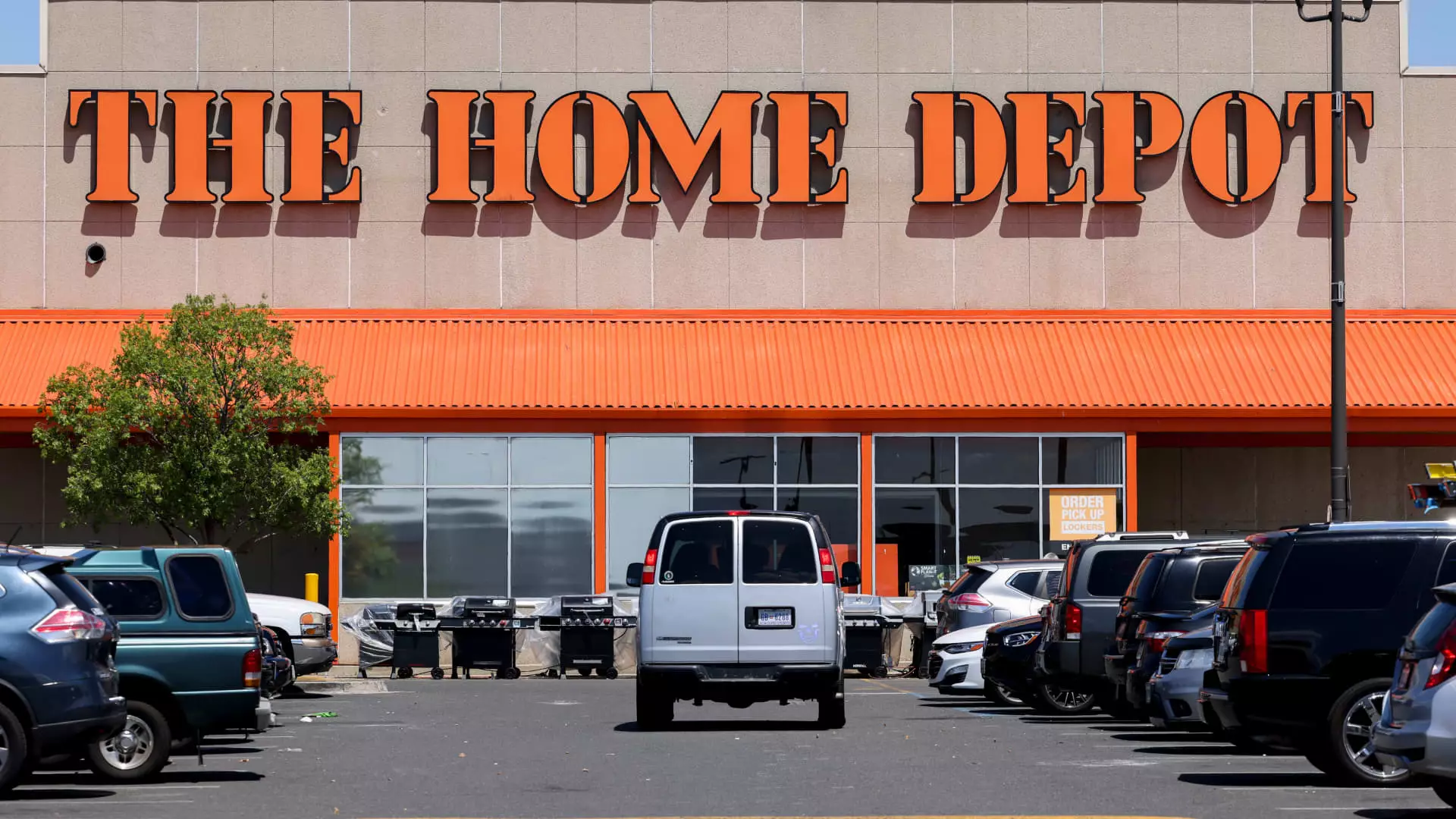The retail sector has always been a battleground for analysts and investors alike, with stocks fluctuating based on a myriad of factors including economic indicators, market trends, and consumer behavior. Recently, two significant players in this arena—Home Depot and Best Buy—have demonstrated contrasting outlooks from Wall Street experts, signaling a complex landscape for investors to navigate.
Home Depot has garnered a favorable rating from the Telsey Advisory Group, which upgraded the stock to an ‘outperform’ status with an impressive price target increase from $360 to $455 per share. This 14% potential upside, based on the stock’s performance as of Thursday’s closing price, reflects Telsey’s confidence in Home Depot’s ability to weather ongoing challenges and capitalize on future opportunities. The stock has been on an upward trajectory this year, gaining nearly 17%, although this is a contrast to the S&P 500’s more robust 25% increase in the same timeframe.
The upcoming third-quarter results are being eagerly anticipated, with analysts predicting a period of ‘continued softness’ in sales amid caution. However, the long-term outlook for Home Depot is buoyed by several key factors—lower mortgage rates, recovery efforts from recent hurricanes, and the easing of high demand that characterized the post-pandemic home improvement boom. These catalysts are expected to foster substantial earnings and revenue growth in 2025, aligning with Telsey’s expectations for Home Depot to outperform broader market indices.
Recent changes in economic policies have also played a pivotal role in shaping Telsey’s positive outlook. The Federal Reserve’s more accommodative stance—including interest rate cuts—aims to stimulate economic activity, particularly in the housing market. A lower interest rate regime typically results in cheaper mortgage rates, which is likely to benefit both homebuilders and new homeowners, in turn driving up demand for Home Depot’s products and services.
Jim Cramer, a prominent financial analyst, echoed these sentiments, suggesting Home Depot could significantly benefit from these easing measures. While awaiting third-quarter earnings, he emphasized the importance of focusing on future guidance more than immediate results, hinting at investors needing to be patient due to a six to nine-month lag between Federal rate cuts and potential upswings in the housing market.
In stark contrast to Home Depot’s promising outlook, Best Buy faces increased scrutiny. Recently, Citi downgraded its price target for Best Buy from $115 to $109, while maintaining a ‘buy’ rating. This adjustment stems from various external factors that could pose significant challenges to the electronics retailer, particularly President-elect Donald Trump’s anticipated China tariffs. Best Buy’s heavy reliance on imported goods, especially electronics manufactured in China, could expose it to price increases, potentially dampening consumer demand.
Despite these hurdles, analysts believe the ongoing tech replacement cycle could act as a silver lining for Best Buy. The demand for upgraded tech products, particularly those utilizing artificial intelligence, remains robust, suggesting a potential boost in earnings and same-store sales as customers flock to replace aging devices.
However, the looming threat of tariffs casts a shadow over this optimistic projection. With shares declining approximately 2.5% this past week, investors are left to ponder whether Best Buy can sustain its growth amidst such geopolitical and economic challenges.
The diverging trajectories of Home Depot and Best Buy highlight the complexities of the retail market and the challenges faced by individual entities within it. Home Depot appears well-positioned to leverage favorable economic conditions and internal capabilities to achieve growth, while Best Buy navigates substantial headwinds that could impede its progress.
While Home Depot’s upcoming earnings report may not yield extraordinary results, its foundational strength and favorable market conditions provide a clear path toward future growth. Conversely, Best Buy must contend with potential profit erosion due to external tariffs, despite the promising landscape for tech products.
For investors, the contrasting narratives surrounding these two stocks serve as a reminder of the importance of thorough analysis and diversification in portfolio management. The retail sector continues to be an arena filled with opportunities and pitfalls; astute investors must remain vigilant and responsive to emerging trends and market dynamics.

